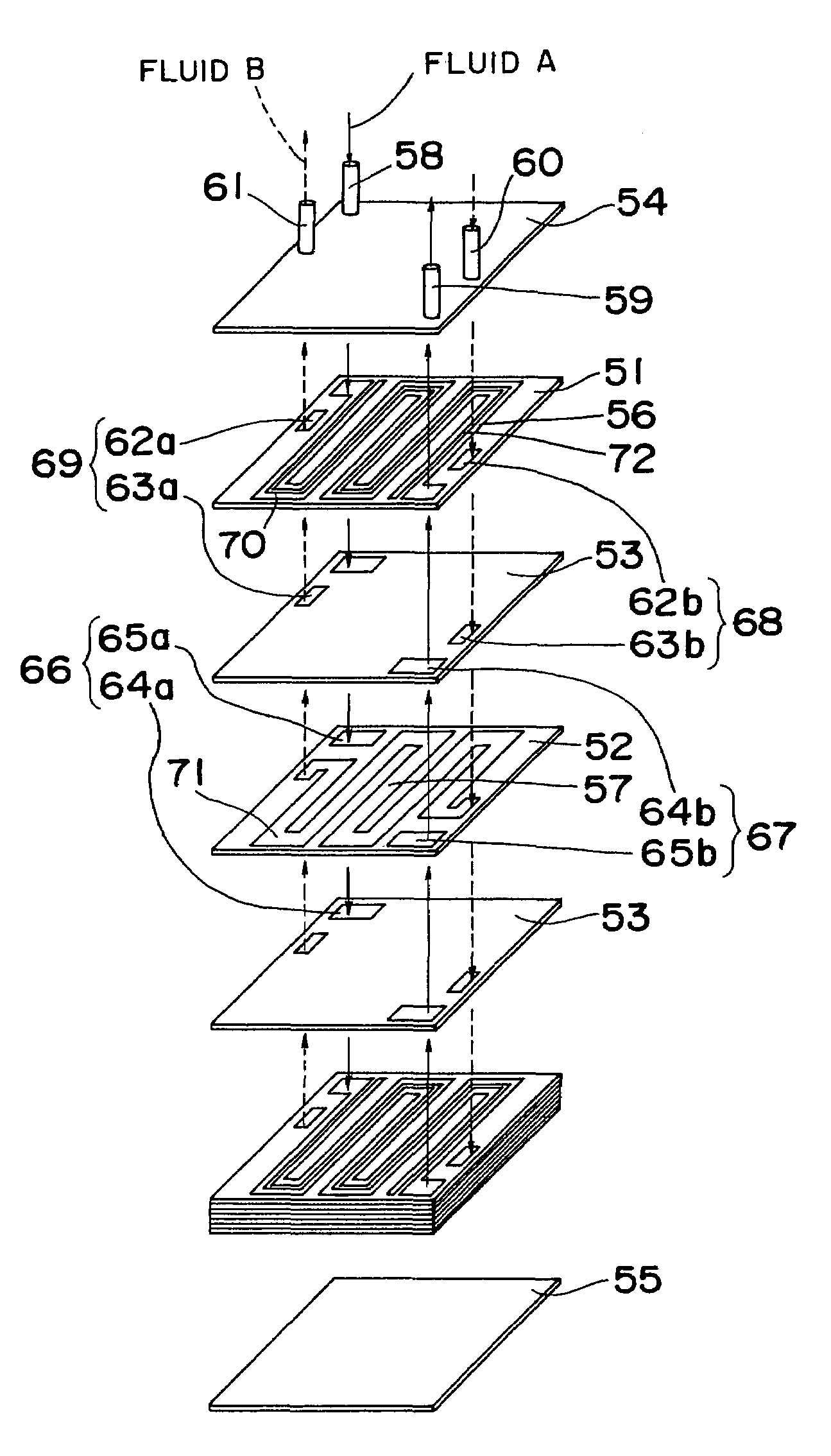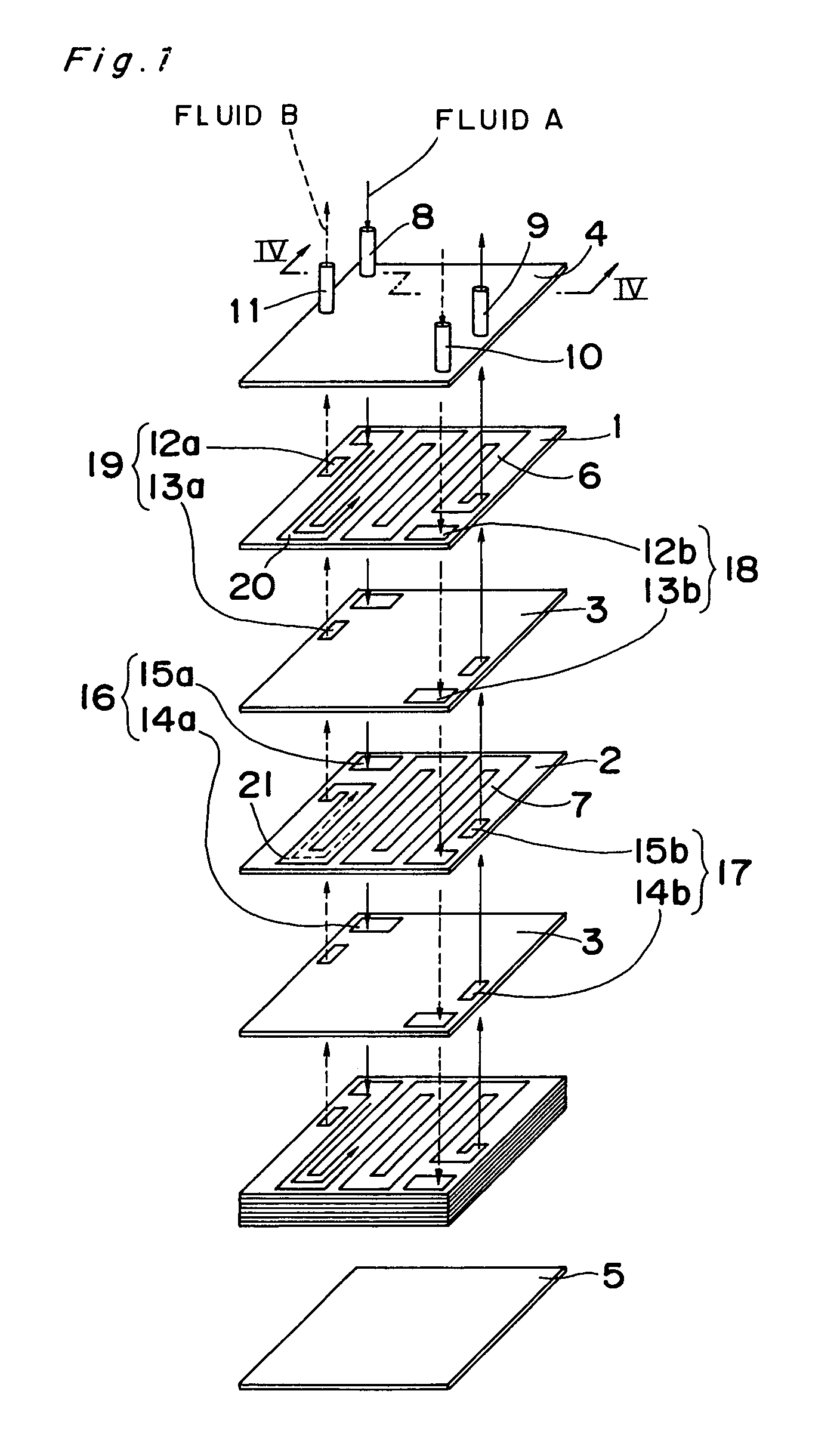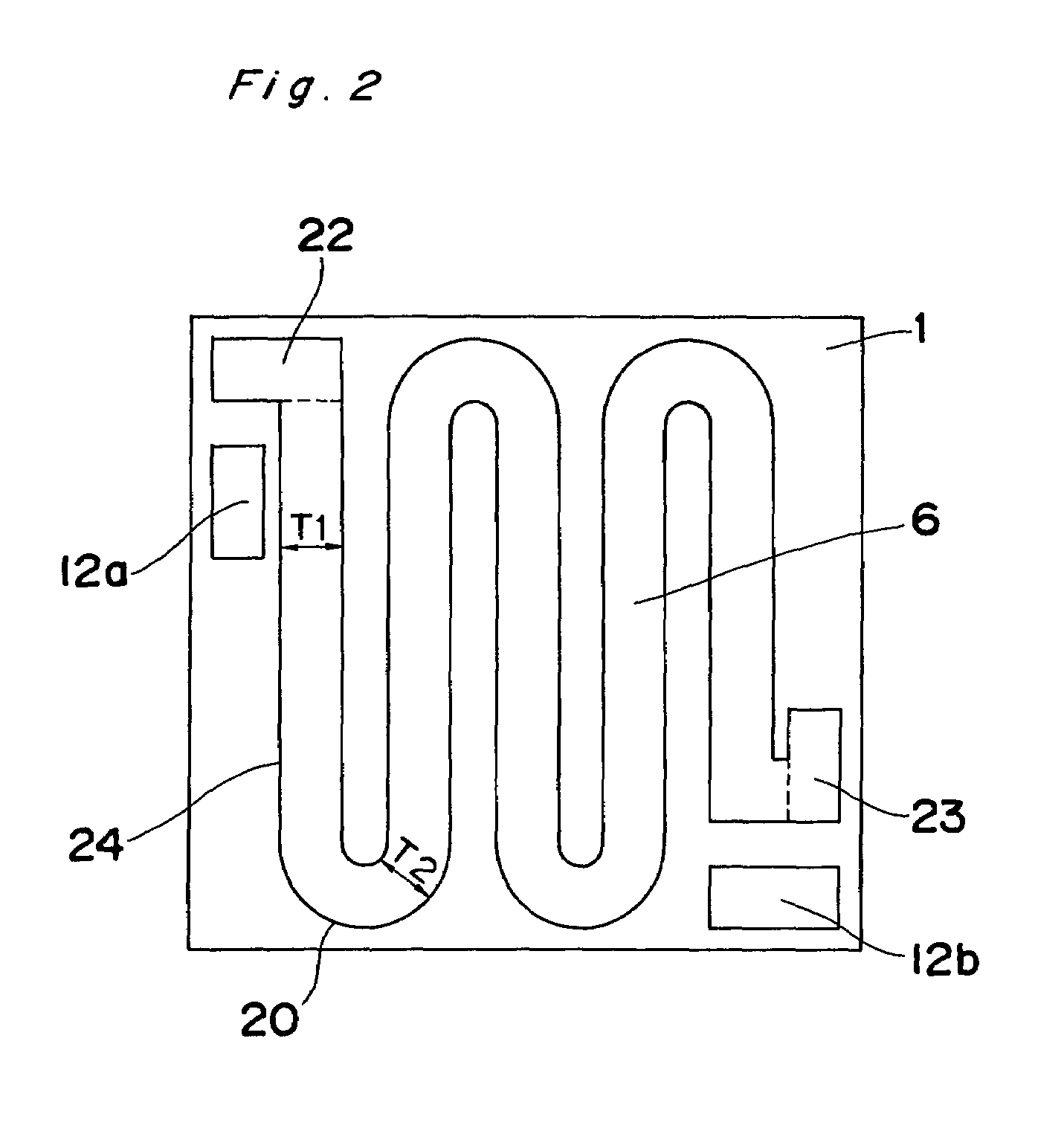Plate type heat exchanger and method of manufacturing the heat exchanger
a heat exchanger and plate technology, applied in the field of plate heat exchangers, can solve the problems of increasing the size reducing the service life of the heat exchanger, so as to achieve reliable plate heat exchangers, enhance the degree of contact between the plates, and enhance the yield
- Summary
- Abstract
- Description
- Claims
- Application Information
AI Technical Summary
Benefits of technology
Problems solved by technology
Method used
Image
Examples
embodiment 1
[0041]FIG. 1 depicts a plate heat exchanger according to a first embodiment of the present invention, with a portion thereof taken apart for ease of understanding of the interior structure thereof.
[0042]This plate heat exchanger includes a plurality of plates sandwiched between a pair of end plates extending parallel to each other, with a plurality of separate passageways defined in some of the plates. The plurality of passageways are not in fluid communication with each other and are defined in different plates. The directions of flow of fluids in the plurality of passageways are essentially opposite to each other.
[0043]More specifically, as shown in FIG. 1, a plurality (first group) of passageway plates 1 each having a passageway 6 defined therein as a penetration for the passage of a heat exchange fluid A and a plurality (second group) of passageway plates 2 each having a passageway 7 defined therein as a penetration for the passage of a heat exchange fluid B are piled up (stacke...
embodiment 2
[0060]FIG. 3 depicts a plate heat exchanger according to a second embodiment of the present invention:
[0061]This plate heat exchanger includes a plurality of plates sandwiched between a pair of end plates and each having a plurality of separate passageways defined therein as penetrations that are not in fluid communication with each other. The directions of flow of fluids in the plurality of passageways are essentially opposite to each other.
[0062]More specifically, as shown in FIG. 3, a plurality of passageway plates 31 each having passageways 34, 35 defined therein as penetrations are piled up (stacked) one upon the other and sandwiched between a pair of end plates 32, 33. The passageways 34, 35 adjoin and extend parallel to each other to form respective boustrophedonic fluid paths. The directions of flow of the heat exchange fluid A in the passageways 34 and the heat exchange fluid B in the passageways 35 are countercurrent (opposite) with respect to each other.
[0063]Each passage...
embodiment 3
[0070]FIG. 4 depicts a plate heat exchanger according to a third embodiment of the present invention.
[0071]This plate heat exchanger includes a plurality (first group) of passageway plates 51 each having a passageway 56 defined therein as a penetration for the passage of a heat exchange fluid A, and a plurality (second group) of passageway plates 52 each having a passageway 57 defined therein as a penetration for the passage of a heat exchange fluid B. These passageway plates 51, 52 are piled up (stacked) alternately and sandwiched between a pair of end plates 54, 55, with a partition plate 53 interposed between adjacent passageway plates 51, 52. The passageway 56 in each passageway plate 51 is divided into two sections in the widthwise direction thereof by a partition member 72.
[0072]Each passageway plate 51 has through-holes 62a, 62b defined therein in addition to the passageway 56, while each passageway plate 52 similarly has through-holes 65a, 65b defined therein in addition to ...
PUM
| Property | Measurement | Unit |
|---|---|---|
| thickness | aaaaa | aaaaa |
| surface area per volume | aaaaa | aaaaa |
| temperature | aaaaa | aaaaa |
Abstract
Description
Claims
Application Information
 Login to View More
Login to View More - R&D
- Intellectual Property
- Life Sciences
- Materials
- Tech Scout
- Unparalleled Data Quality
- Higher Quality Content
- 60% Fewer Hallucinations
Browse by: Latest US Patents, China's latest patents, Technical Efficacy Thesaurus, Application Domain, Technology Topic, Popular Technical Reports.
© 2025 PatSnap. All rights reserved.Legal|Privacy policy|Modern Slavery Act Transparency Statement|Sitemap|About US| Contact US: help@patsnap.com



